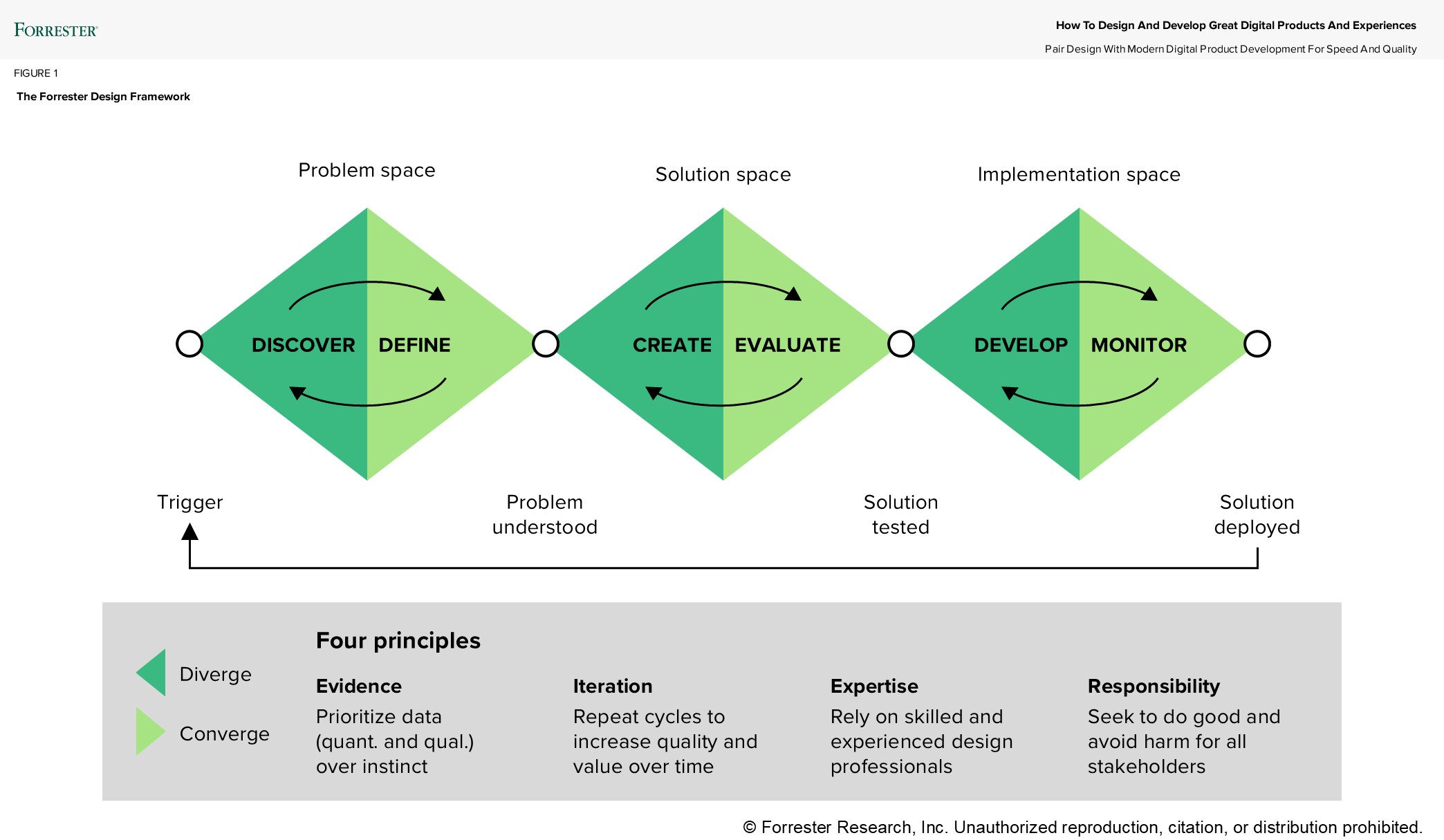Designing Digital Products And Experiences That Delight: A Blueprint For Speed, Quality, And Customer Impact
In today’s fast-moving digital landscape, customer expectations evolve rapidly — and so must the products and experiences you create. Our latest Forrester report, How To Design And Develop Great Digital Products And Experiences, outlines a blueprint for organizations striving to stay ahead by combining design excellence with modern development practices.
Why Change Is Imperative
Emerging technologies and shifting customer behaviors are redefining what “great” looks like in digital experiences. It’s no longer enough to be functional — experiences must be intuitive, emotionally engaging, and continuously evolving. The most successful organizations are those that:
- Design iteratively, continuously refining existing experiences based on real-time customer insights.
- Innovate boldly, placing new digital products and services at the heart of their strategy.
- Embrace adaptability, anticipating future needs rather than maintaining the status quo.
The Forrester Design Framework: A Unified Approach
To help teams navigate the complexity of modern product and experience design, Forrester introduces a comprehensive design framework built on four key components:
- Spaces: Break down challenges into three spaces — problem, solution, and implementation — to create clarity and support prioritization.
- Modes: Balance divergent thinking (exploration) with convergent thinking (decision-making) to fully explore options before selecting the most promising options.
- Phases: Engage in six iterative phases — discover, define, create, evaluate, develop, and monitor — to ensure holistic and effective design.
- Principles: Ground every decision in evidence, iteration, expertise, and responsibility to ensure inclusive and ethical outcomes.

This framework empowers cross-functional teams to collaborate effectively, stay aligned, and deliver experiences that resonate deeply with users.
Pairing Design With Modern Development
Design alone isn’t enough. To deliver at speed and scale, organizations must integrate design with agile, DevOps, and other best-in-class development practices. This research outlines six interconnected phases of digital product and experience development:
- Discover: Use qualitative research and analytics to uncover real user needs.
- Define: Prioritize opportunities using visual frameworks like journey maps and personas.
- Create: Prototype solutions iteratively, focusing on user value and business impact.
- Evaluate: Test for usability, accessibility, and customer resonance.
- Develop: Build scalable, high-performing products and experiences with strong design-engineering collaboration.
- Monitor: Track performance holistically across customer behavior, perception, and technical metrics.
The Bottom Line
Great digital products and experiences are the result of intentional design, continuous learning, and seamless collaboration across disciplines — they don’t happen by accident. By adopting Forrester’s design framework and aligning it with modern development practices, organizations can deliver experiences that not only meet today’s expectations but also anticipate tomorrow’s needs.
If you’re a Forrester client, you can explore these findings in detail by downloading the report, How To Design And Develop Great Digital Products And Experiences. And if you’d like to discuss this topic further, please schedule an inquiry or guidance session.
